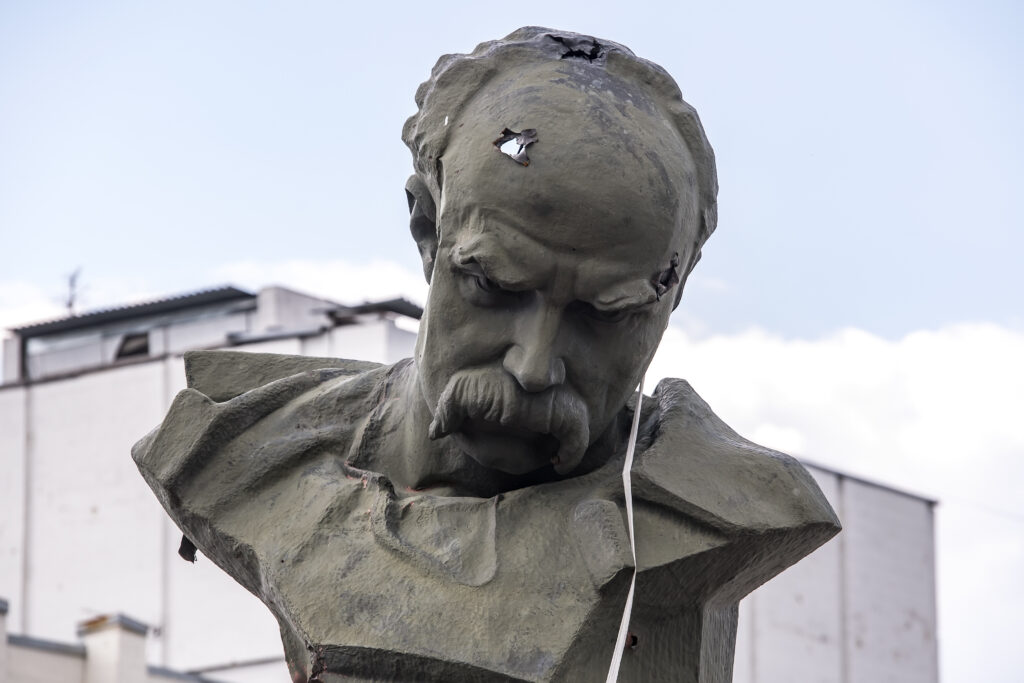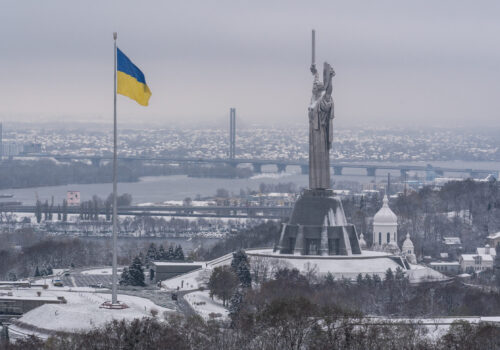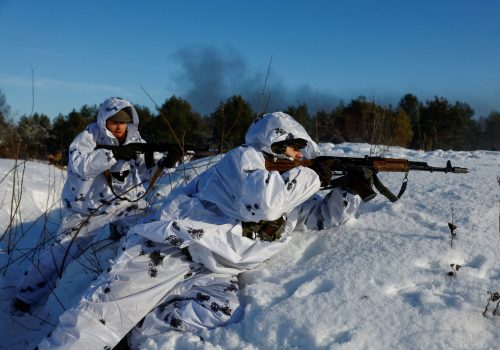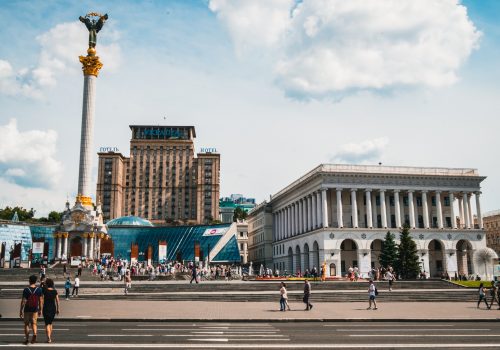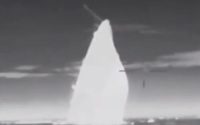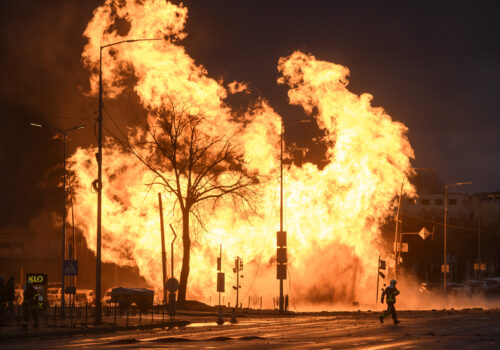
Russia’s invasion aims to erase Ukrainian cultural identity
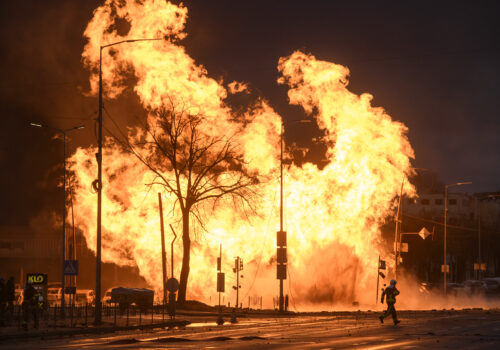
As Ukrainians fight for their country’s survival amid Russia’s ongoing invasion, defending Ukraine’s culture has never been more important. With Russia openly seeking to extinguish Ukrainian statehood and erase Ukrainian identity, safeguarding Ukrainian culture should be recognized as a national priority. This could be highlighted in Ukraine’s National Recovery Plan at both the national and local levels, reflecting the key role cultural identity has played in sustaining the country during the barely conceivable horrors of the invasion unleashed almost two years ago by Vladimir Putin.
Ukraine has already achieved what many regard as a decisive moral victory in the war against Russia. While Kremlin propagandists deny Ukraine’s right to exist and Putin insists Ukrainians are actually Russians (“one people”), the outpouring of Ukrainian national pride since February 2022 has been instrumental in fueling the country’s remarkable resilience and spirit of resistance.
As the invasion approaches the two-year mark, it is now obvious that Putin and other Russian leaders seriously underestimated the strength of Ukrainian national identity. Nevertheless, there is ample evidence that eradicating all traces of Ukrainian identity remains a core Russian war aim. Speaking to the New York Times in December 2022, UN rapporteur for cultural rights Alexandra Xanthaki explained that Russia sought not merely to capture Ukrainian territory, but to achieve the gradual destruction of Ukraine’s cultural life. “One of the justifications of the war is that Ukrainians don’t have a distinct cultural identity,” she noted.
As the world watches the Russian invasion of Ukraine unfold, UkraineAlert delivers the best Atlantic Council expert insight and analysis on Ukraine twice a week directly to your inbox.
Russia’s assault on Ukrainian cultural identity can be seen in everything from the widespread looting of national treasures to the targeted destruction of historic sites including museums, theaters, libraries, and monuments. These attacks are evidence of an intentional Kremlin campaign to eradicate Ukraine’s distinct culture and heritage.
Prominent targets have included a museum dedicated to Ukrainian folk artist Maria Prymachenko in Kyiv region, the Sviatohirsk Monastery in eastern Ukraine’s Donetsk region, the Transfiguration Cathedral within the UNESCO-listed historic city center of Odesa in southern Ukraine, and a Kharkiv museum dedicated to eighteenth century Ukrainian philosopher Hryhorii Skovoroda. In recognition of the growing threat posed to Ukraine’s cultural heritage, UNESCO has placed a number of historic Ukrainian landmarks on its list of endangered sites.
Russia’s invasion is not only destroying the physical manifestations of Ukraine’s cultural heritage. It is also claiming the lives of Ukrainians at the forefront of shaping the country’s contemporary cultural landscape. One prominent victim was Victoria Amelina, an award-winning 37-year-old novelist and poet who was killed by a Russian missile in July 2023 while dining in a restaurant in eastern Ukraine.
At the time of her death, Amelina was attempting to preserve the works of other Ukrainian artists and poets killed or exiled during Russia’s invasion. “My worst fear is coming true: I’m inside a new Executed Renaissance. As in the 1930s, Ukrainian artists are killed, their manuscripts disappear, and their memory is erased,” she wrote in the foreword to the published diary of another author, Volodymyr Vakulenko, who was murdered during the 2022 Russian occupation of Izium.
Eurasia Center events

The Putin regime’s attempts to suppress Ukrainian national culture and identity are part of a Russian imperial tradition stretching back hundreds of years. This is most immediately apparent in the long history of restrictions imposed on the use of the Ukrainian language. Russian attempts to ban the Ukrainian language began in the early seventeenth century and include over 100 separate measures adopted by successive imperial administrations throughout the Tsarist and Soviet eras. The chilling end goal of this linguistic imperialism can be seen in a mid-nineteenth century Tsarist decree stating that the Ukrainian language “never existed, does not exist, and shall not exist.”
So far, the Putin regime’s efforts to erase Ukraine’s cultural identity appear to be backfiring. Indeed, amid the death and destruction of Russia’s full-scale invasion, Ukrainians are embracing their culture, history, and identity in unprecedented ways.
Since February 2022, millions of Ukrainians have adopted the Ukrainian language in their everyday lives. Ukrainian historical narratives that were suppressed for generations by the forces of Russian imperialism are now being rediscovered and are transforming perceptions of what it means to be Ukrainian. From poetry to pop music, contemporary Ukrainian culture is experiencing a golden age.
It is imperative that this consolidation of Ukrainian identity is embedded in the country’s recovery agenda, both at the ministerial level and via the National Council for the Recovery of Ukraine. While numerous similar heritage preservation initiatives are currently underway, it makes sense to prioritize the protection of cultural identity within broader national recovery efforts. Supporting individuals and institutions as they continue to engage with the essence of “being Ukrainian” is vital for the country’s future. It is also the perfect response to Russia’s dreams of wiping Ukraine off the map altogether.
Martha Holder is a board member at the Foundation to Preserve Ukraine’s Sacral Arts and a member of the Ukrainian National Women’s League of America. She previously worked in international development at the World Bank (1994-2016).
Further reading
The views expressed in UkraineAlert are solely those of the authors and do not necessarily reflect the views of the Atlantic Council, its staff, or its supporters.

The Eurasia Center’s mission is to enhance transatlantic cooperation in promoting stability, democratic values and prosperity in Eurasia, from Eastern Europe and Turkey in the West to the Caucasus, Russia and Central Asia in the East.
Follow us on social media
and support our work
Image: A Taras Shevchenko monument with bullet holes in Borodianka, Kyiv area, Ukraine. June 09, 2022 (Photo by Maxym Marusenko/NurPhoto)
